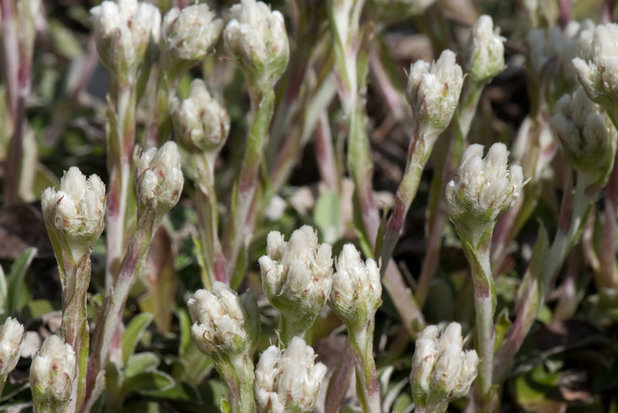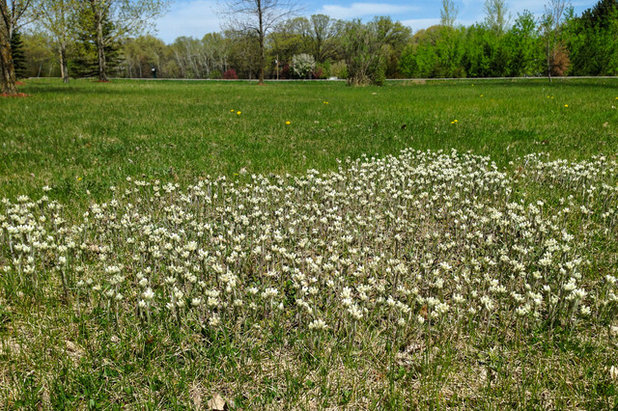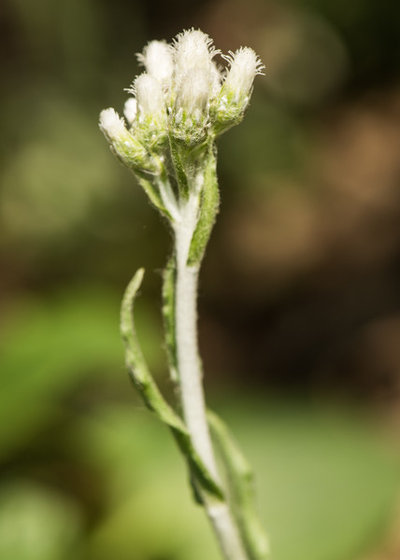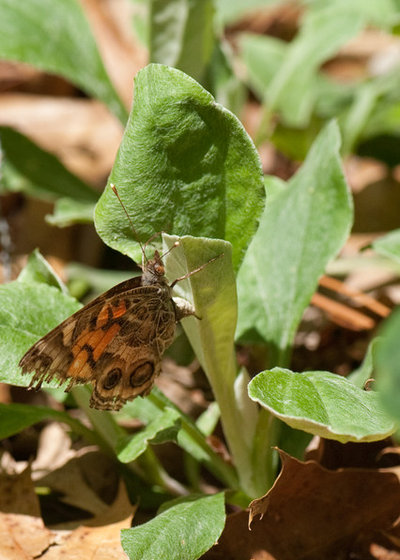Field pussytoes (
Antennaria neglecta) is a U.S. native perennial that grows in sandy, open sites near woodlands, in old fields and in shallow soils in partial or full sun. This low-growing, herbaceous plant can be used in a rock garden, between steppingstones or on the edge of a sidewalk.
Field pussytoes, as well as other plants in the
Antennaria genus, is a larval host plant for the American lady butterfly (
Vanessa virginiensis)
. If you want to garden for butterflies, this is an excellent larval host plant that you can include in your garden to provide food for caterpillars.

Holm Design & Consulting LLC
Botanical name: Antennaria neglectaCommon name: Field pussytoes
Origin: Native from Montana east to Maine in the North and from Colorado and Oklahoma in the Southwest eastward to North Carolina; in Canada it is native from British Columbia eastward to Quebec, Nova Scotia and Prince Edward Island as well as the Northwest Territory
Where it will grow: Hardy to minus 45 degrees Fahrenheit, or minus 43 degrees Celsius (USDA zones 2b to 7b; find your zone)
Typical plant communities: Dry to medium woodland edges and openings, old fields, rocky bluffs and sand prairies
Soil requirement: Dry to medium, sand to loamy-sand soil
Light requirement: Partial sun to full sun
Mature size: 4 to 14 inches tall and 4 to 8 inches wide

Holm Design & Consulting LLC
Benefits and tolerances: Tolerates dry conditions, sandy soil and periodic mowing
Seasonal interest: Silver-gray basal clusters of leaves covered in fine white hairs; upright narrow flower heads that resemble upside-down cat’s paws (pussy toes) open from April through June
When to plant: Spring or fall; potted plants are available from most native-plant nurseries in areas where it occurs
Distinguishing traits. Field pussytoes is a low-growing native perennial that develops stolons that spread aboveground and then root, forming new clumps or clusters of silvery basal foliage.
White flowers that resemble upside-down cat’s paws (pussy toes) are held on upright flower stalks and open between April and June. In regions where sandy soil occurs, it is not uncommon for large clusters of this plant to grow intermixed with grass in rural lawns or on roadside embankments.

Holm Design & Consulting LLC
How to use it. It is best planted in clusters so that a large mass forms as the plants fill in and spread outward. Use it in a rock garden, allowing the plant to spread in the spaces around the rocks; on the edges of or between informal steppingstones or pavers; along the border of a perennial garden; or planted in the lawn.
Planting notes. Look for small container-grown plants at your local nursery. There is no need to purchase this plant in large containers, as small container-grown plants will spread and fill in during one or two growing seasons.

Holm Design & Consulting LLC
Pollinator notes. All of the flowers on a given plant are either male or female. They can be pollinated by wind, which transports the pollen from male flowers to female flowers. The flowers can also be insect-pollinated. Pollinator activity can be variable from season to season; look for native bees, flies, beetles and, occasionally, butterflies visiting the flowers.
The American lady butterfly — which seems to demonstrate a preference for laying eggs on plants with silver foliage, such as everlasting (
Gnaphalium and
Anaphalis) and wormwood (
Artemisia) — will also lay eggs on field pussytoes. This butterfly migrates from the southern United States in the spring, arriving in the upper Midwest in early May. Females lay their eggs on the underside of the leaf of the host plant, as shown in this photo.

Holm Design & Consulting LLC
Look for late-instar American lady caterpillars in early June in the leaves (
instar refers to the phase between two molting periods). The caterpillars form an easy-to-spot feeding shelter by joining the sides of a leaf together, causing the leaves to curl.
Shown: A painted lady butterfly caterpillar





